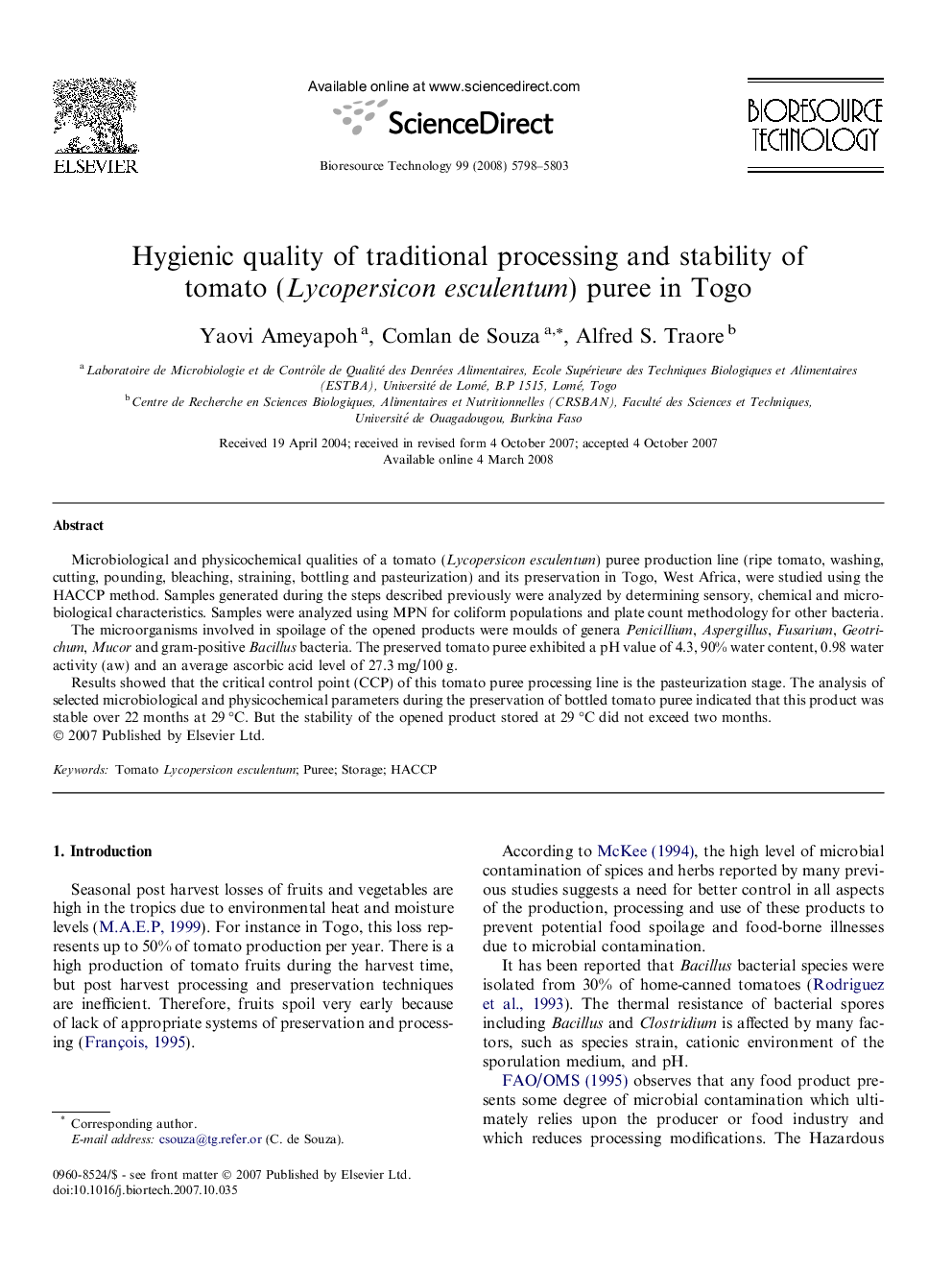| Article ID | Journal | Published Year | Pages | File Type |
|---|---|---|---|---|
| 685143 | Bioresource Technology | 2008 | 6 Pages |
Microbiological and physicochemical qualities of a tomato (Lycopersicon esculentum) puree production line (ripe tomato, washing, cutting, pounding, bleaching, straining, bottling and pasteurization) and its preservation in Togo, West Africa, were studied using the HACCP method. Samples generated during the steps described previously were analyzed by determining sensory, chemical and microbiological characteristics. Samples were analyzed using MPN for coliform populations and plate count methodology for other bacteria.The microorganisms involved in spoilage of the opened products were moulds of genera Penicillium, Aspergillus, Fusarium, Geotrichum, Mucor and gram-positive Bacillus bacteria. The preserved tomato puree exhibited a pH value of 4.3, 90% water content, 0.98 water activity (aw) and an average ascorbic acid level of 27.3 mg/100 g.Results showed that the critical control point (CCP) of this tomato puree processing line is the pasteurization stage. The analysis of selected microbiological and physicochemical parameters during the preservation of bottled tomato puree indicated that this product was stable over 22 months at 29 °C. But the stability of the opened product stored at 29 °C did not exceed two months.
